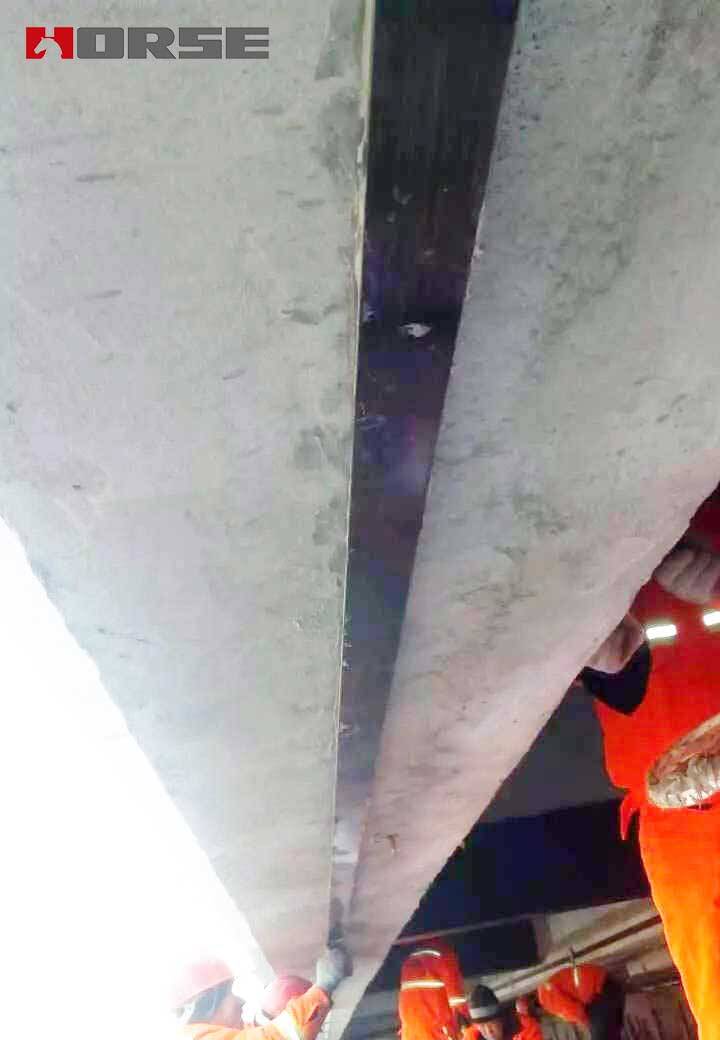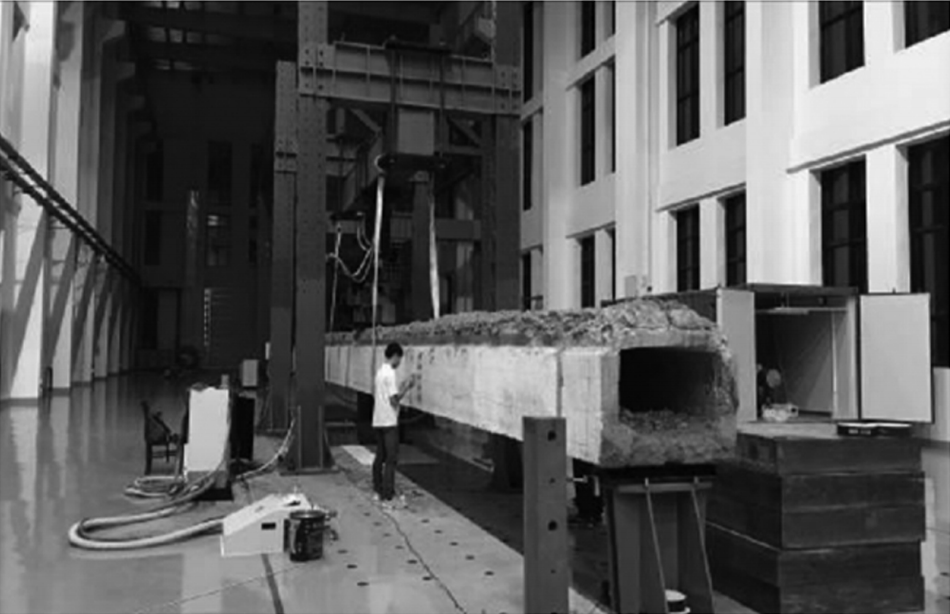Solutions
Horse Construction offers full range of structural strengthening materials with technical supports, documentation supports, products supports, project supports.
Bridge Strengthening Technology with Prestressed Carbon Fiber Laminate

1 The development of bridge reinforcement technology
The fabricated prestressed concrete hollow slab bridge has the characteristics of low building height, convenient prefabrication, and economical materials. It is one of the most commonly used bridge types in small and medium span bridges. Investigation and research have found that the main cause of common diseases of in-service hollow slab bridges is poor lateral overall performance. In this regard, most of the reinforcement methods are based on improving the horizontal integrity of the hollow slab bridge and increasing the bearing capacity, including external transverse prestressed reinforcement, transversely bonded steel plate reinforcement, shaped steel plate reinforcement, beam removal and rib reinforcement, and longitudinal pasted reinforcement.
Traditional reinforcement methods have disadvantages such as difficulty in construction, long construction period, poor corrosion resistance and poor durability. In comparison, the reinforcement technology of externally attached stiffening materials has the advantages of not requiring large construction equipment and interrupting traffic. Among them, the prestressed carbon fiber laminate strip reinforcement technology stands out. This technology addresses the shortcomings of carbon fiber laminate strip reinforcement and external prestress reinforcement technologies, and combines the advantages of the two technologies to not only increase the bearing capacity of the bridge structure, but also significantly reduce structural deformation. Improve structural rigidity, make full use of material properties, and save materials and engineering costs.
2 Development of prestressed carbon fiber laminate strip reinforcement technology
Since the 1980s, developed countries such as Britain, the United States, Canada, and Japan have begun to apply carbon fiber materials to structural reinforcement. In 1992, Triantafillou et al. found that the use of prestressed carbon fiber cloth to strengthen the bearing capacity of the test beam increased by 3 to 4 times. At the same time, it was observed that the application of prestress has a significant inhibitory effect on the cracks of the reinforced beam. In 1993, Deuring compared prestressed and non-prestressed carbon fiber strip reinforcement technologies and found that both reinforcement technologies improved the load-bearing capacity of components, but the deformation of the former was significantly smaller than the latter. In 1997, Garden believed that to improve the stiffness and load-bearing capacity of components, a higher prestress level is necessary for prestressed carbon fiber. The prestress level must reach at least 25% of the ultimate strength of carbon fiber. In 2004, Wight et al., through experimental research, concluded that the technology of applying prestress with carbon fiber laminate can suppress the occurrence of cracks in the reinforced beam. In China, the teams of Shang Shouping and Wu Zhiping of Hunan University have also conducted corresponding research on this, and have achieved significant results.
3 Application of prestressed carbon fiber laminate strip reinforcement technology
3.1 Damage to hollow slab beam components
In this paper, a post-tensioned prestressed concrete hollow slab beam with a length of 20m is selected as the research object. Its service period is 22 years. There are a few longitudinal cracks and diagonal cracks in the beam web. The beam structure is shown in Figure 1. According to the measurement results after the beams and slabs are broken on site: the single beam bottom plate is equipped with 5 bundles of cold-drawn IV grade pre-stressed thick steel bars, using metal bellows, the outer diameter of the bellows is 32mm, and the thick steel bar diameter is 25mm. Around 4m at both ends of the beam, 12mm diameter threaded steel bars are used for reinforcement, the other parts are 8mm structural steel bars, and the thickness of the bridge deck is 8cm. The beam concrete strength is C50, and the bridge deck concrete strength is C30. Before strengthening and repairing, the author measured the true stress state and performance of the prestressed concrete hollow slab beam through static load experiment. To test its actual working performance to carry capacity. After the staged loading test, when the damaged hollow slab beam is loaded to failure, its bearing capacity is 380kN and the maximum crack width is 1.5mm.

3.2 Prestressed carbon fiber laminate strip reinforcement technology
The author used prestressed carbon fiber laminate strip and steel plate to strengthen the bending and shear resistance of the beam bottom of the single beam and the oblique cracks near the support.

3.3 Reinforcement effect
After reinforcement, the static loading experiment was performed on the hollow slab beam again. The test found that the reinforced hollow slab deforms into a gradual change, and the carbon fiber laminate strip has good mechanical properties. Finally, the local degumming of the prestressed carbon fiber laminate strip was used as the termination condition, and the ultimate load reached 420kN. The reinforced hollow slab beam had better ultimate bearing capacity than before. This fully verified the effect of prestressed carbon fiber laminate strip reinforcement technology on the hollow slab beam.
4 Conclusion
Prestressed carbon fiber laminate strip reinforcement technology has a good application effect in the reinforcement and repair of concrete hollow slab beams. It can effectively improve the bearing performance of the hollow slab girder bridge. It has been verified that the bearing capacity recovery of the damaged concrete hollow slab beam after reinforcement is even slightly higher than the original bearing capacity. Compared with traditional structural reinforcement methods, the prestressed carbon fiber laminate strip reinforcement technology has the advantages of short construction period, fast construction, small impact on traffic, and good durability, and has good promotion and application value.
You can find anything here you are in need of, have a trust trying on these products, you will find the big difference after that.

High strength, unidirectional carbon fiber wrap pre-saturated to form a carbon fiber reinforced polymer (CFRP) wrap used to strengthen structural concrete elements.

High strength carbon fiber reinforced polymer (CFRP) strip / laminate / plate for structural strengthening and concrete repair

Prestressed carbon fiber reinforced polymer(CFRP) plate for slab, beam strengthening to increase stiffness, reduce distortion and deflection of members, reduce the cracks, avoid and stop cracking.